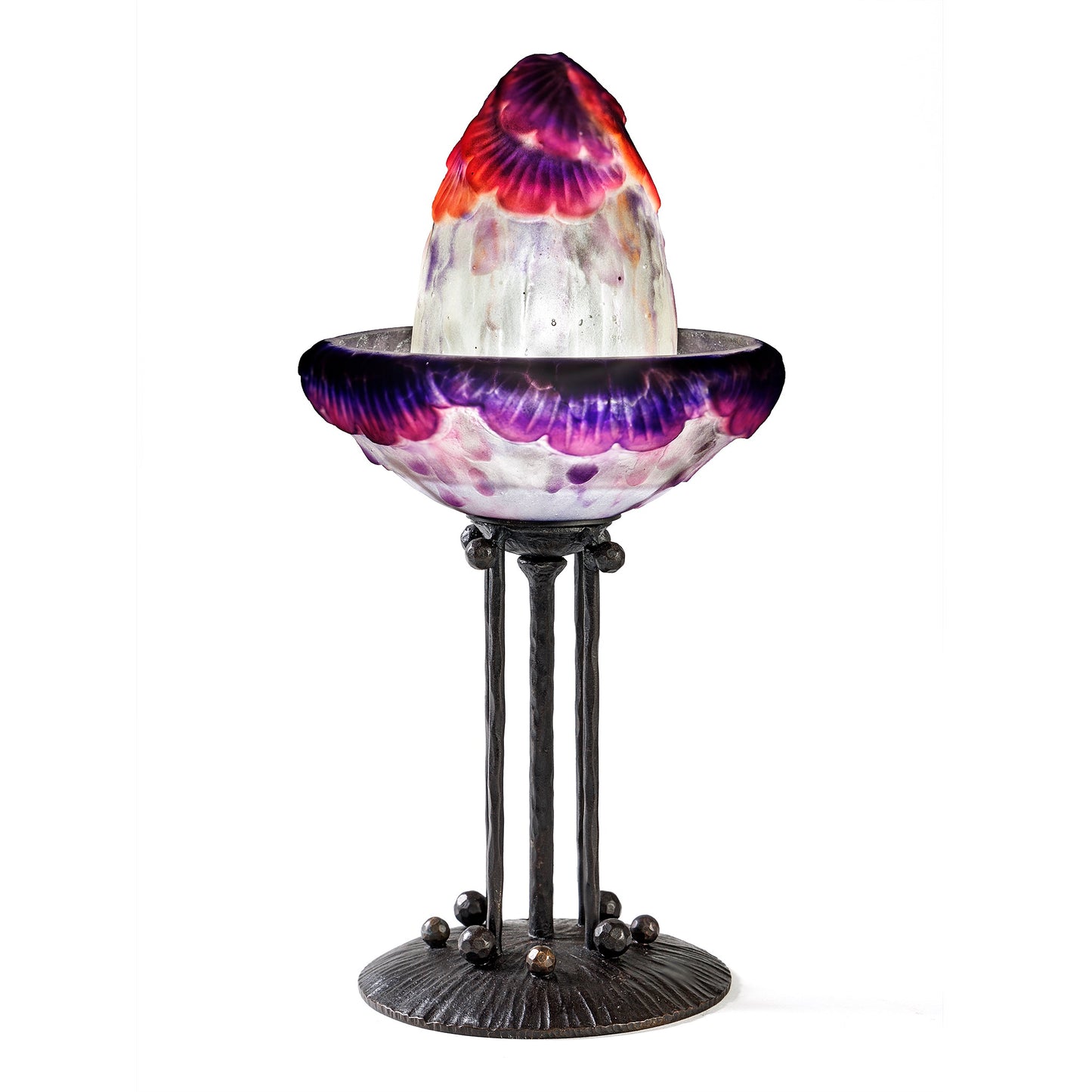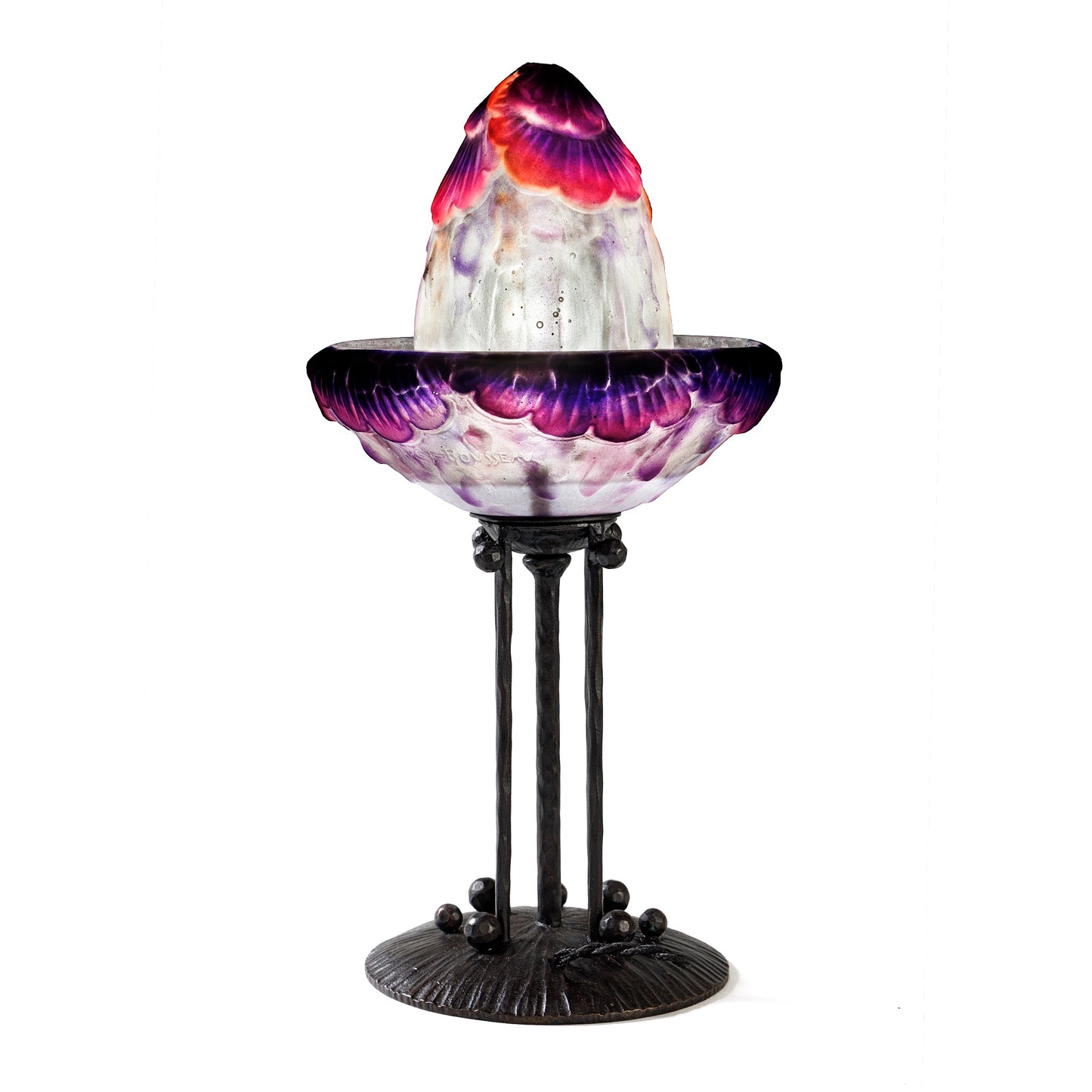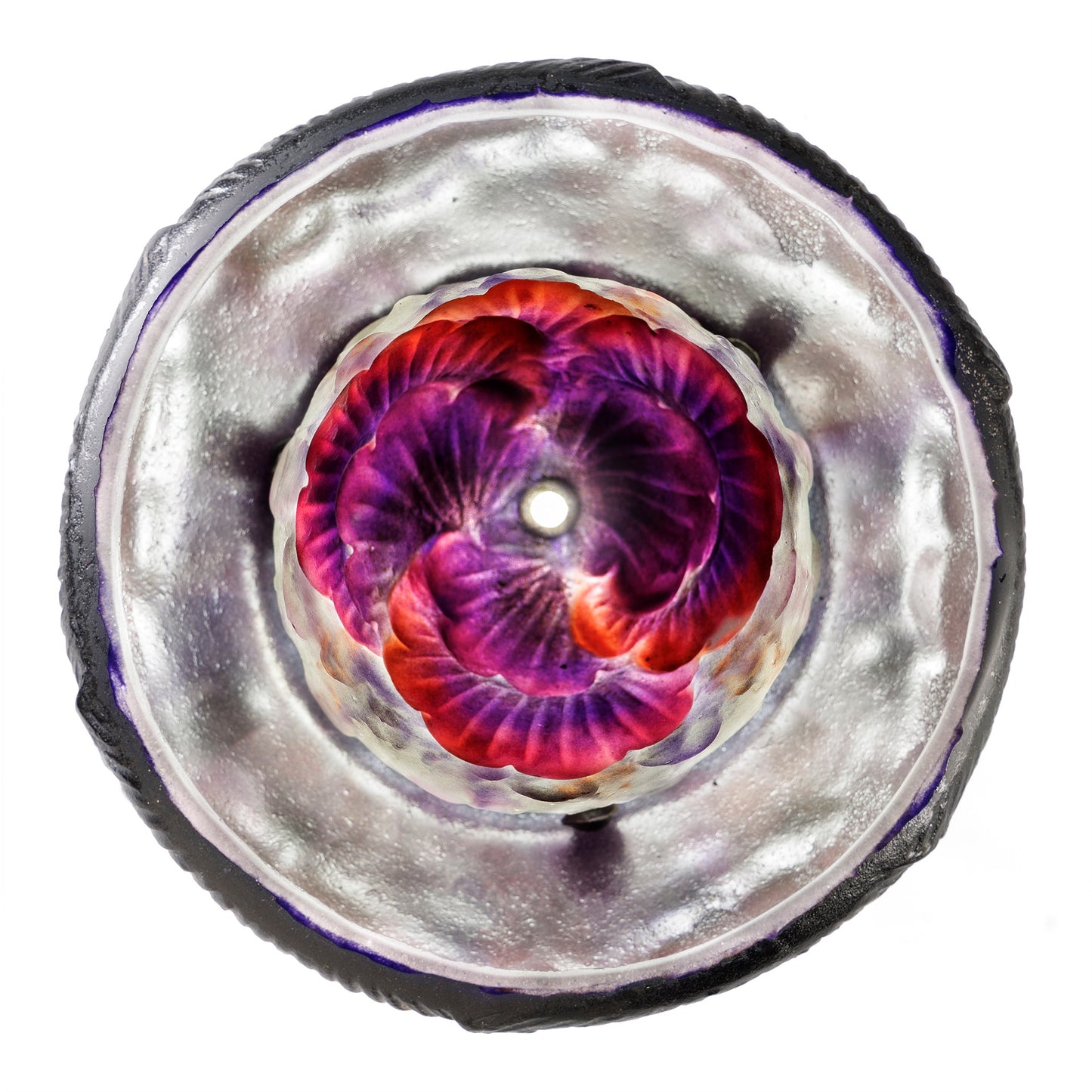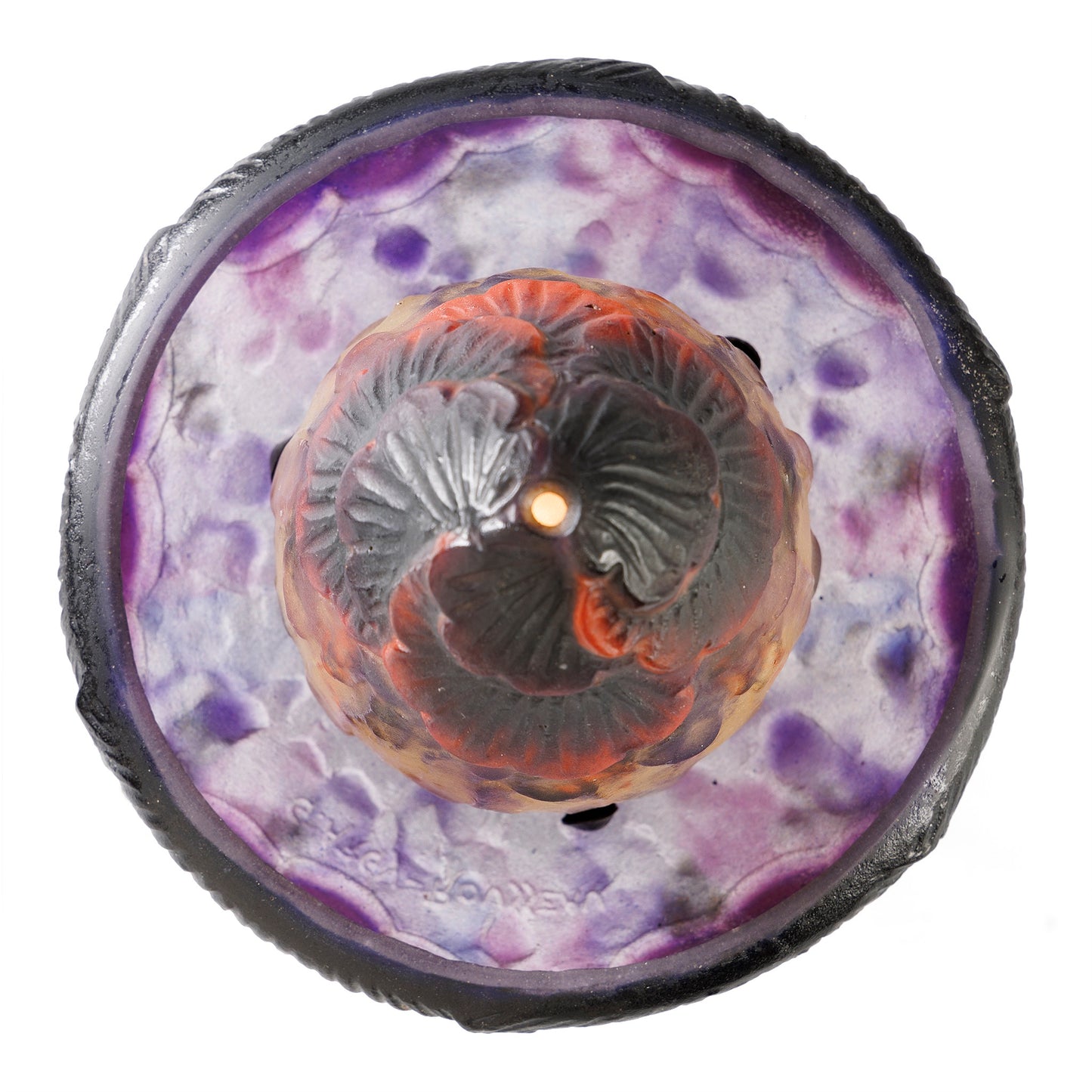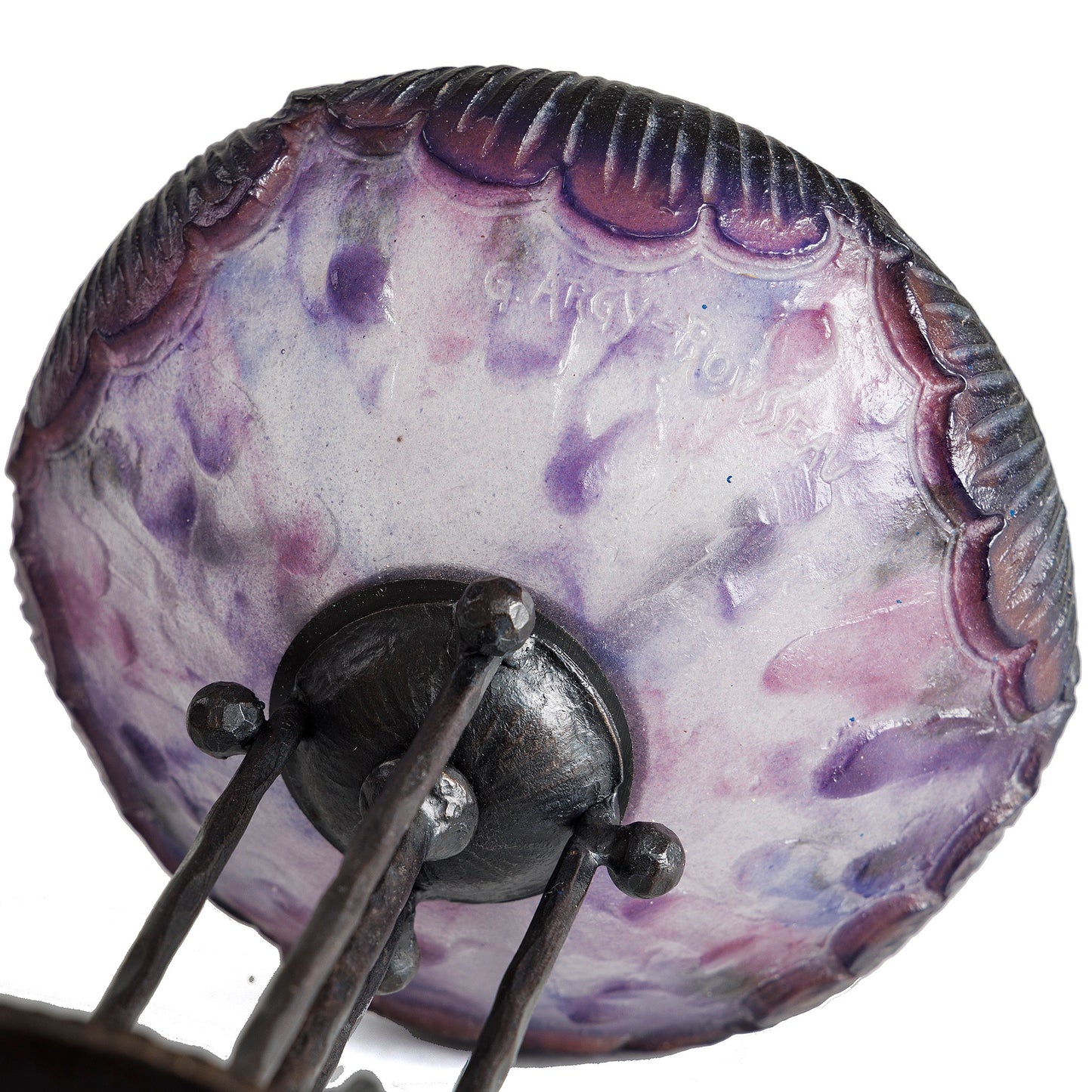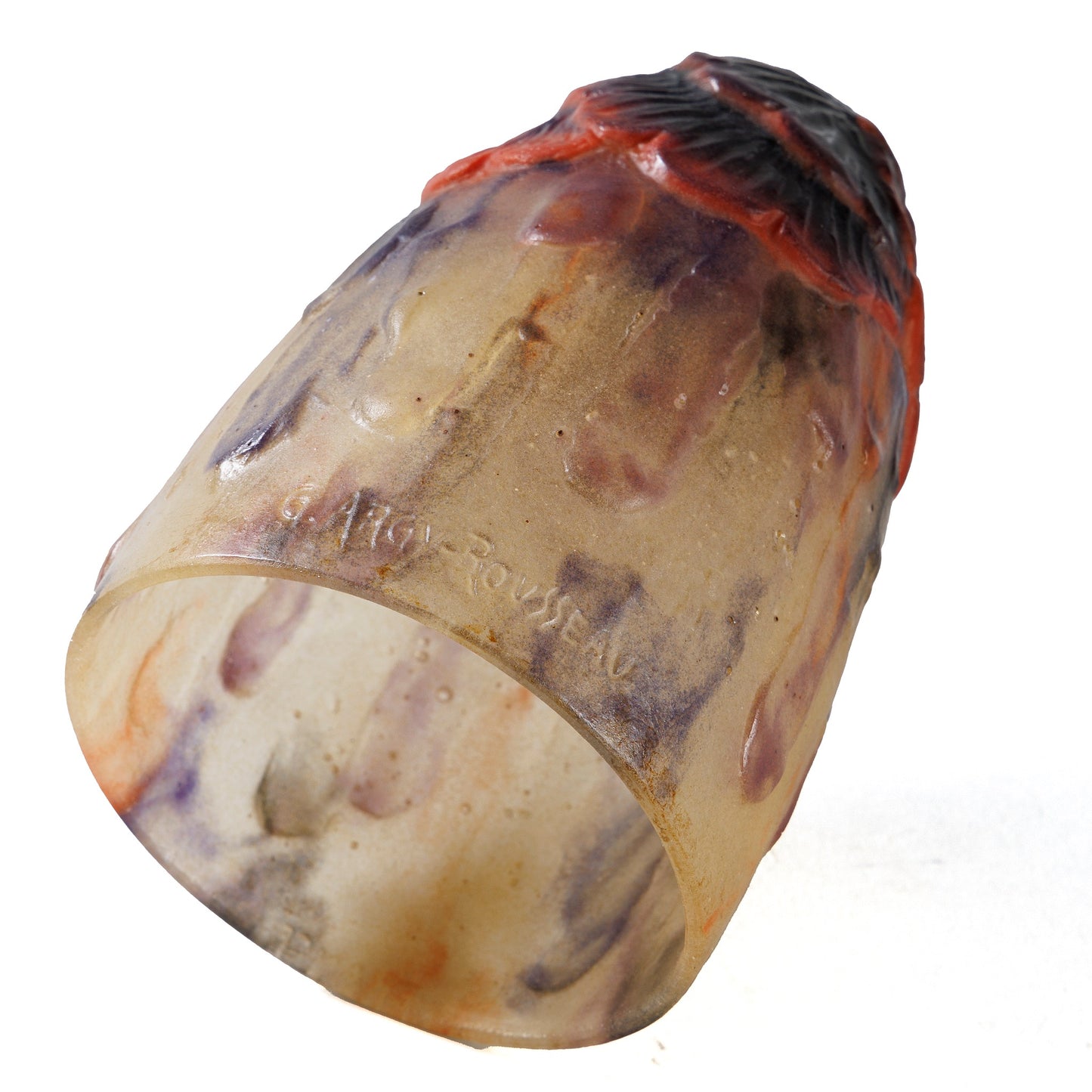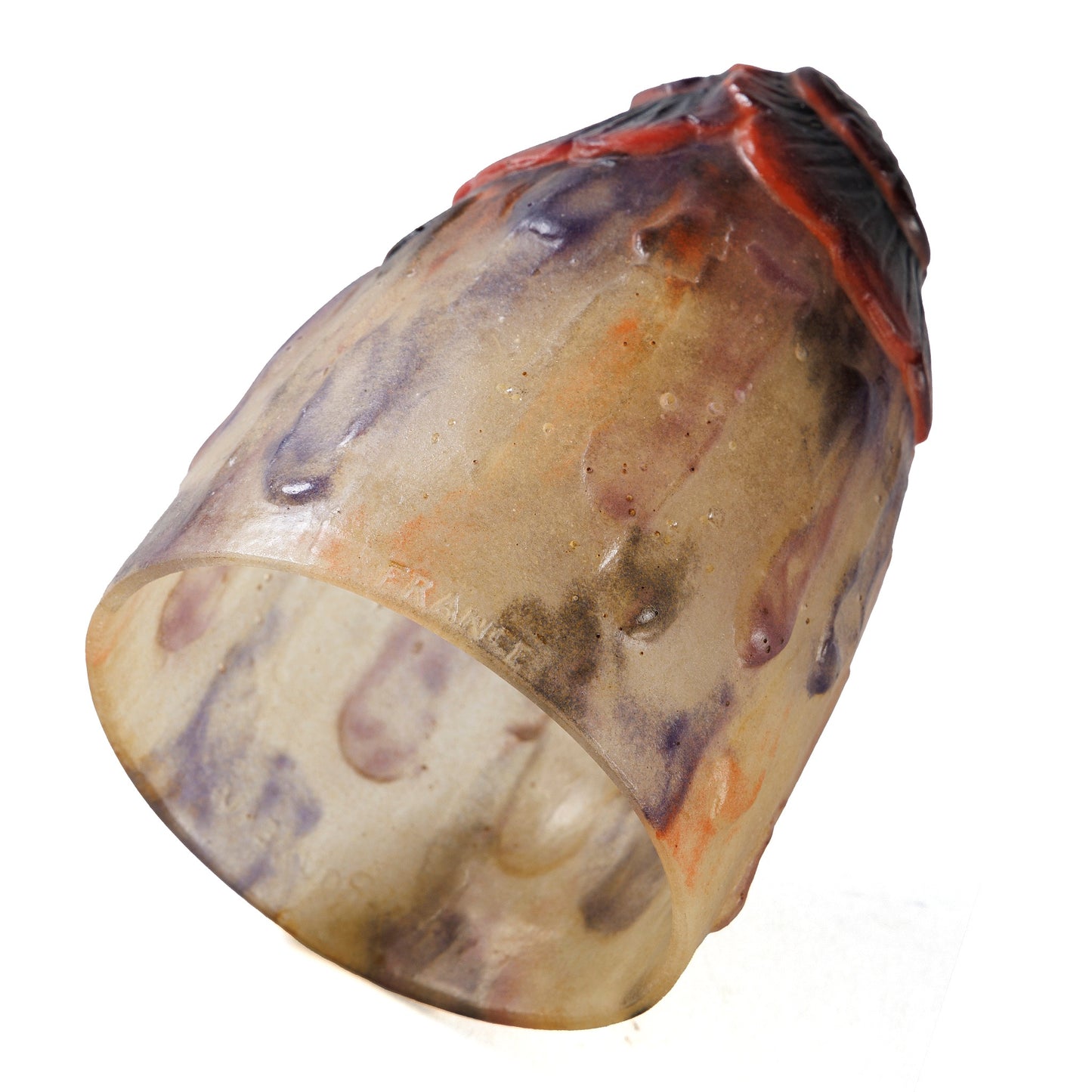Gabriel Argy-Rousseau Pâte de Verre "Fleurs Tropicales" Table Lamp
Item #: YEL-21234
Artist: Gabriel Argy-Rousseau
Country: France
Circa: 1925
Dimensions: 12.6" height, 3.25" diameter.
Materials: Pâte de verre, translucent glass, Wrought Iron
Signed: base impressed “G. Argy-Rousseau”, shade impressed “G. Argy-Rousseau”and “France”
Literature: Bloch-Dermant Janine Gabriel Argy-Rousseau and Yves Delaborde. 1991. G. Argy-Rousseau : Glassware As Art : With a Catalogue Raisonné of the Pâtes De Verre. London: Thames and Hudson. p.207
Item #: YEL-21234
Artist: Gabriel Argy-Rousseau
Country: France
Circa: 1925
Dimensions: 12.6" height, 3.25" diameter.
Materials: Pâte de verre, translucent glass, Wrought Iron
Signed: base impressed “G. Argy-Rousseau”, shade impressed “G. Argy-Rousseau”and “France”
Literature: Bloch-Dermant Janine Gabriel Argy-Rousseau and Yves Delaborde. 1991. G. Argy-Rousseau : Glassware As Art : With a Catalogue Raisonné of the Pâtes De Verre. London: Thames and Hudson. p.207












